Ghenadie Coica, a 42-year-old agricultural engineer, greets us at the entrance to Elit Fruct’s apple and plum orchards near the Moldovan village of Coșerniţa, 25 kilometres east of Chișinău on the bank of the Dniester River. Established in 2015, the company holds itself to high standards, and production is supervised very closely by engineers like Coica.
“We get about 55 to 60 tonnes of apples [per year] per hectare,” he explains. With more than 63 hectares of apple orchards, that means “somewhere between 3,000 and 3,500 tonnes a year”.
Traditionally Elit Fruct has exported more than 90 per cent of its harvest to the Russian Federation market. “We sell a little on the domestic market,” Coica adds. “The rest is exported to the Russian Federation.”
But since the war in Ukraine began, everything has changed for the company. “We have had many problems […] Exports [to Russia] were stopped for awhile until other transport routes were explored,” Coica says. “The distance of transport of goods has increased. It is now on the route [of] Romania-Hungary-Slovakia-Poland-Belarus and then Russian Federation. Transportation is much more expensive now.”

Workers in the sorting warehouse at Elit Fruct. Photo: Mikhail Kalarashan
Eastern exports have effectively been blocked since Russia invaded Ukraine, a development that has had severe consequences for Moldova’s apple growers. Producers in Moldova collect on average about 450,000 tonnes of apples annually and export 250,000 tonnes (a business worth about US$100m (€105m) per year).
Last year’s harvest was 650,000 tonnes according to official statistics, making 2021 Moldova’s best year in apple production since its independence from the Soviet Union in 1991. The question is, where is all that fruit going to go? For many farmers and politicians, now is the time to look westward.
“We would also like to export to the EU. For this, we obtained the European certification to be able to ship some quantities to European countries. We want to export, for example, to Romania as well. It depends if we get a reasonable price,” says Coica, the agronomist from Elit Fruct.
This orchard in Coșerniţa grows six varieties of apples using trees brought from Italy, favoured because they are more disease resistant; Italian experts come regularly to check on production. Apples are carefully cared for in the fruit-growing phase and must reach a diameter of 65 to 70 millimetres at maturity.
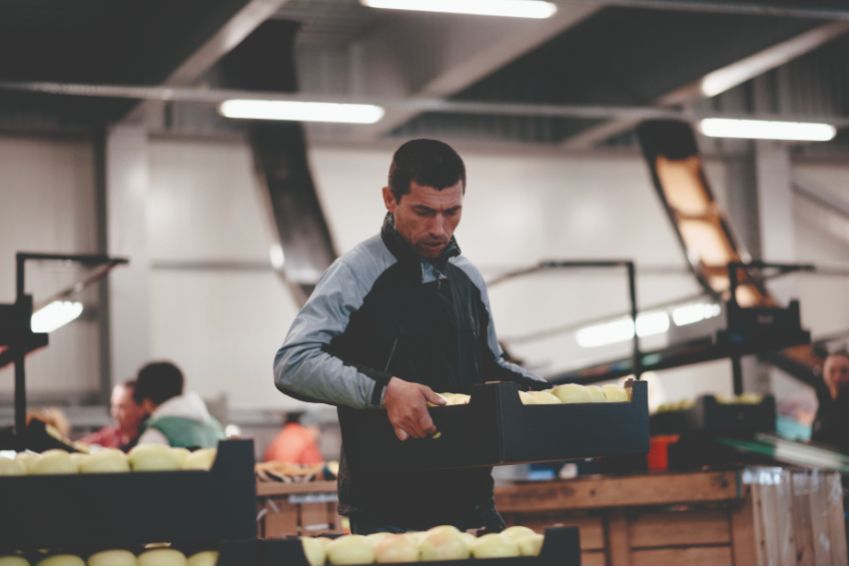
Warehouse worker at Elit Fruct. Photo: Mikhail Kalarashan
Elit Fruct, which employs around 50 people from the village, uses modern irrigation technology, and soil moisture is measured daily with high-tech gadgets and software applications. “We have phone apps, and I check all this data daily from our mobile phones. So, we know exactly when to irrigate and how much water to use,” adds Coica. The water is brought from the Dniester River, located a few hundred metres away, and stored in a basin before being directed to the orchard through irrigation systems.
After harvesting the fruits from mid-August to October, they are kept in cold storage rooms. The harvest is sold over the course of the year, says Coica, but in a worst-case scenario, the crop is sold to apple juice producers – an extremely rare outcome.
“We can put the whole annual harvest in the cold rooms, and we export the plums quite quickly anyway,” he says. “So far, [they have] only been exported to Russia because the price was better. Our bosses are already negotiating with European Union markets. I think the Russian market will have problems because the Russian ruble is devaluing, and it will not be profitable to sell there anymore.”
But it’s not just exports that are posing a problem: local apple growers are also struggling to afford fertilisers imported from Russia, with Coica estimating that prices have almost tripled since the start of the war. About 75 per cent of the fertiliser required for agriculture in Moldova comes from Russia, according Veaceslav Ioniţă, an economic analyst at the Chișinău-based think-tank IDIS “Viitorul”.
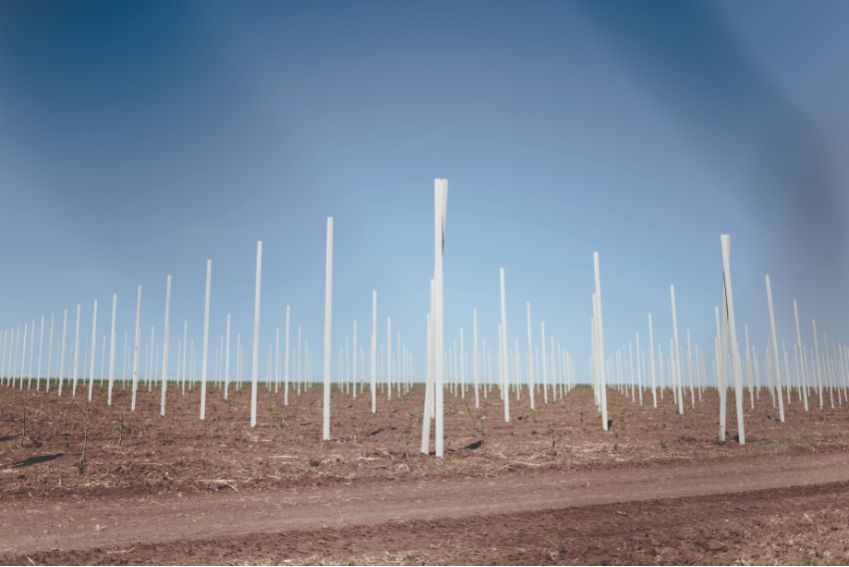
Poles showing where apple trees will be planted. Photo: Mikhail Kalarashan
Next to the orchards, the company has built modern warehouses on a few thousand metres of land. Here, dozens of workers pack apples in boxes of about 14 kilograms.
“The war is affecting us, especially in terms of logistics,” says Sergiu, the warehouse manager. “It’s hard to transport. If you used to transport a truck to Russia in four to five days, now it takes about 14 days through Europe to Russia. So, time and costs have also increased. If we were to choose a route, maybe through Turkey and then by sea to Russia, it takes about 16 days.”
Sergiu believes that exporting to Europe may soon become cheaper than to Russia, at least in terms of logistics. “Today, it is complicated to find trucks in Moldova willing to go to Russia to carry goods there,” he adds.
The company’s employees are confident that there will be other markets for the apples and plums produced here. “We have a lot of orders. We have a lot of work to do. About eight hours a day and sometimes even 10, depending on what orders we have to deliver,” says 60-year-old warehouse worker Liuba.

Warehouse worker at Elit Fruct. Photo: Mikhail Kalarashan
The need to reorient to European markets
The annual domestic consumption of apples in Moldova represents about 200,000 tonnes; the remainder are exported, with more than 95 per cent going to Russia before the war broke out. However, as the invasion drags on, Moldova is seriously considering reorienting some of its exports to the EU markets.
“Overnight, we had to redirect this flow of [goods], it is impossible. Thus, we had to identify other markets. Until the start of the war in Ukraine, exports to Russia were made through three customs points on Russia’s border with Ukraine. But they disappeared with the war,” explains Iurie Fală, the executive director of Moldova Fruct, an association that brings together more than 180 Moldovan producers and exporters.
Nowadays, Moldova exports about 65 per cent of its goods to European markets. Romania imports 25 per cent of its total products from Moldova, making it by far Moldova’s first trading partner.
The Moldovan President, Maia Sandu, stated recently on the TVR Moldova television programme that she is in trade talks with the European Union and has made a request to increase export quotas in the EU for several goods that Moldova has traditionally sold in eastern markets, namely perishable fruits.
“We tell the EU that the gain is reciprocal, because we can no longer import certain goods from the east, which means we will increase imports, but we also need markets. I understand that the technical decision has been prepared, but it will be a political decision at the level of the EU Member States as well, and we will see when we can get it,” Sandu said.
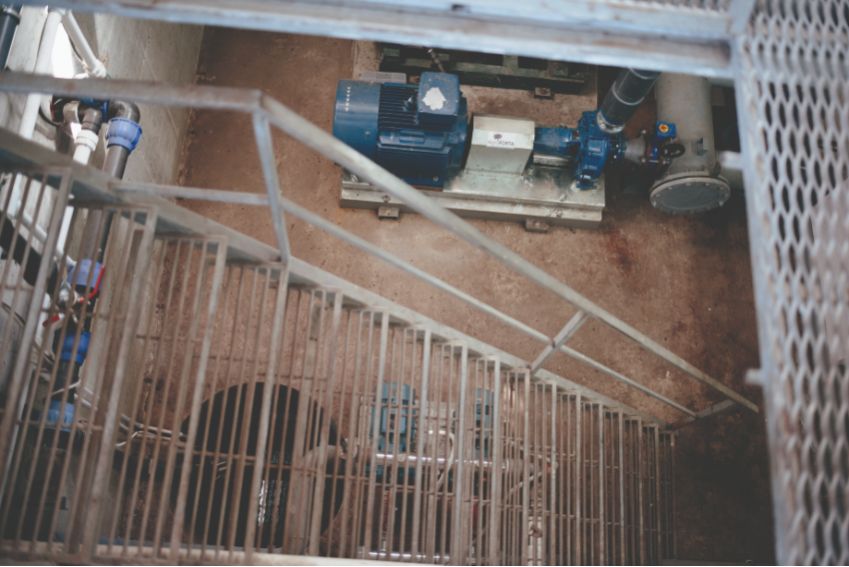
Irrigation system serving Elit Fruct orchards. Photo: Mikhail Kalarashan
Fală, the executive director of Moldova Fruct, emphasised that the EU would need to prioritise increasing Moldova’s export quotas to the EU for cherries, apricots, plums and table grapes, as there is an urgent need to get these perishable fruits to market. As for the annual EU quota for apples from Moldova, it currently stands at 40,000 tonnes, not nearly high enough to absorb the more than 200,000 tonnes of apples that Moldova normally exports to Russia and which risk going bad in storage.
Another issue is that Moldova imports more than 90 per cent of its seeds, fuel and fertilisers from Ukraine and Russia, meaning that the war has caused massive problems for the country’s 33,000 or so small- and medium-sized farmers.
“Moldova is severely affected because we have a rupture in the supply chain for agricultural products,” explains Vasile Șarban, state secretary at the Ministry of Agriculture. “We refer here to fuels, fertilisers, packaging, spices used in the processing, spare parts, even agricultural machinery.”
Yet Șarban remains optimistic, citing a potential upside to the disruption. “Breaking this supply chain, other routes for the transport of Moldovan goods have certainly been identified […] But we hope that this will be clarified because we are negotiating with Romania regarding the streamlining of customs transport,” he says. Crucially, there are plans to change some of Moldova’s train tracks to the European gauge – the country currently uses the narrower Soviet track gauge – which will make it easier to transport goods to Romania by train.
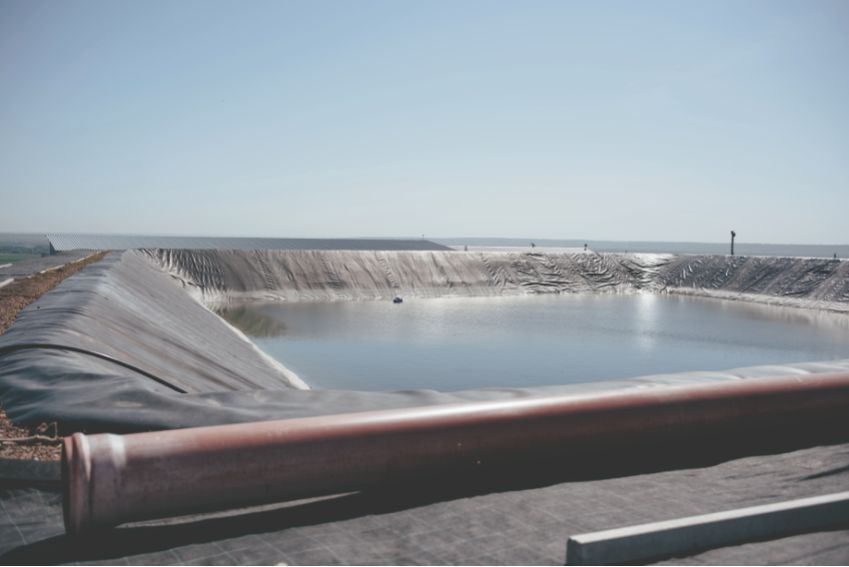
A pool for watering plants in the Elit Fruct orchards. Photo: Mikhail Kalarashan
Many of the warehouses in Moldova are currently full, with some even safeguarding Ukrainian-produced goods for their business partners across the border. The country also has a large grain supply, although the export of wheat, corn and sugar from Moldova has been suspended since 1 March, when the government invoked a state of emergency to prevent a potential food security crisis triggered by the war.
“We have corn grains, but also wheat. Unfortunately, it is forbidden to export wheat from Moldova for the time being. Still, we are currently examining the possibility of opening the export depending on the information we will have from producers across the country and the state of crops this year,” Șarban explains.
In the meantime, Moldovan producers and exporters are starting to reorient themselves towards markets in the European Union as well as those in the Middle East.
“We [are] noticing that exports to European markets have increased compared to other years, making us happy. It gives us hope that we will reorient ourselves, as production and quality meet the requirements of the target markets in the coming years. I am sure that we will be successful, only that we need a proper attitude,” adds Fală, the executive director of Moldova Fruct.
Bolstering trade relations with Romania
According to Șarban, state secretary at the Ministry of Agriculture, Moldova needs to continue exporting its goods to strengthen economic growth and bring the trade balance to a positive state, and he has identified neighbouring Romania as a key trading partner. “Romania has an openness to help us,” he explains.
Since the beginning of the war in Ukraine, Moldova has exported about 40,000 tonnes of apples to Russia, according to calculations made by Fală. However, Fală claims that producers are beginning to diversify: for example, Moldova exported about 11,000 tonnes of apples in March, and only 6,000 tonnes went to Russia.
“We estimate between 3,800 and 4,000 tonnes [of apples] have been exported to Romania from the beginning of the war in Ukraine until now. [Before 2022] it was less than 1,000 tonnes per year,” says Fală.
At the same time, Moldovan economic expert Veaceslav Ioniţă tells The Parliament Magazine before the war in Ukraine there were about 120,000 tonnes of apples – maybe even more – already in stock in Moldova.
“The first market that came to the aid of Moldova was Romania. After a visit of the Moldovan Agriculture Minister [to] Romania, it was agreed that Romania would absorb a certain amount,” Ioniţă explains.
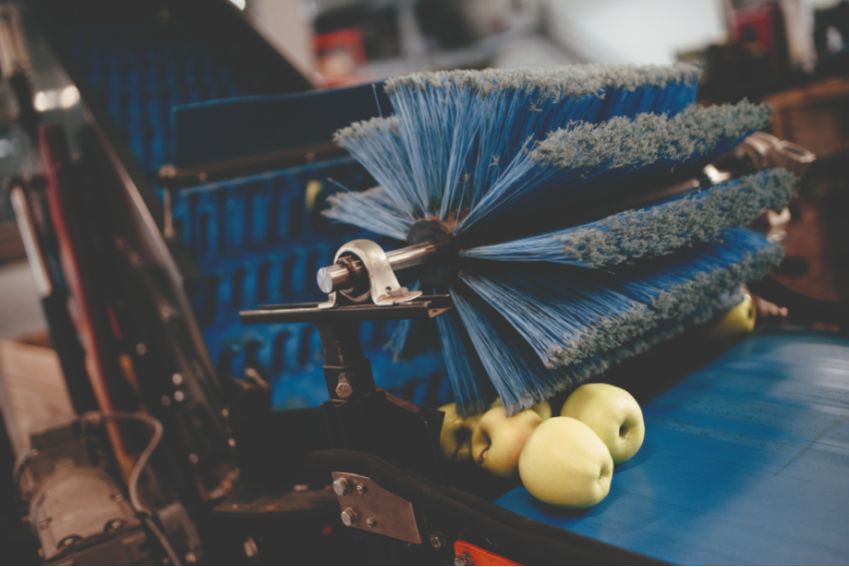
The sorting section of Elit Frut’s warehouse. Photo: Mikhail Kalarashan
Moldova’s ambassador to Romania, Victor Chirilă, recently brought Moldovan apple growers and Romanian retailers to the table, hoping to cultivate economic ties.
Chirilă believes that the Romanian market can essentially replace the Russian one: “I am sure that the Romanian market can absorb many products previously exported to Russia before the war. But for that, Moldovan producers need to make long-term contracts with Romanian retailers, and Moldovan producers need to work with Romanian trade companies to bring these goods to the big supermarket chains in Romania.”
It is also necessary, he emphasises, to streamline the border crossing of freight. Currently, goods crossing the border are subject to two checks, one from customs authorities in Moldova and the other from customs authorities in Romania, which results in long queues of trucks at the Moldova-Romania border. There are discussions at the ministerial level about how best to reduce waiting times, but the key to success is for the Romanian Interior Ministry to carry out these checks faster, explains Chirilă.
Back at Elit Fruct, the loss of the Russian market doesn’t appear to be cause for concern. “If we cannot sell our apples to Russia anymore, I don’t think it will be a tragedy,” explains Coica, the agronomist, citing the company’s high quality standards. He’s confident that soon enough, they will begin selling more fruit in Europe or the Middle East. “In every crisis”, he adds, “there is an opportunity.”
Sign up to The Parliament's weekly newsletter
Every Friday our editorial team goes behind the headlines to offer insight and analysis on the key stories driving the EU agenda. Subscribe for free here.